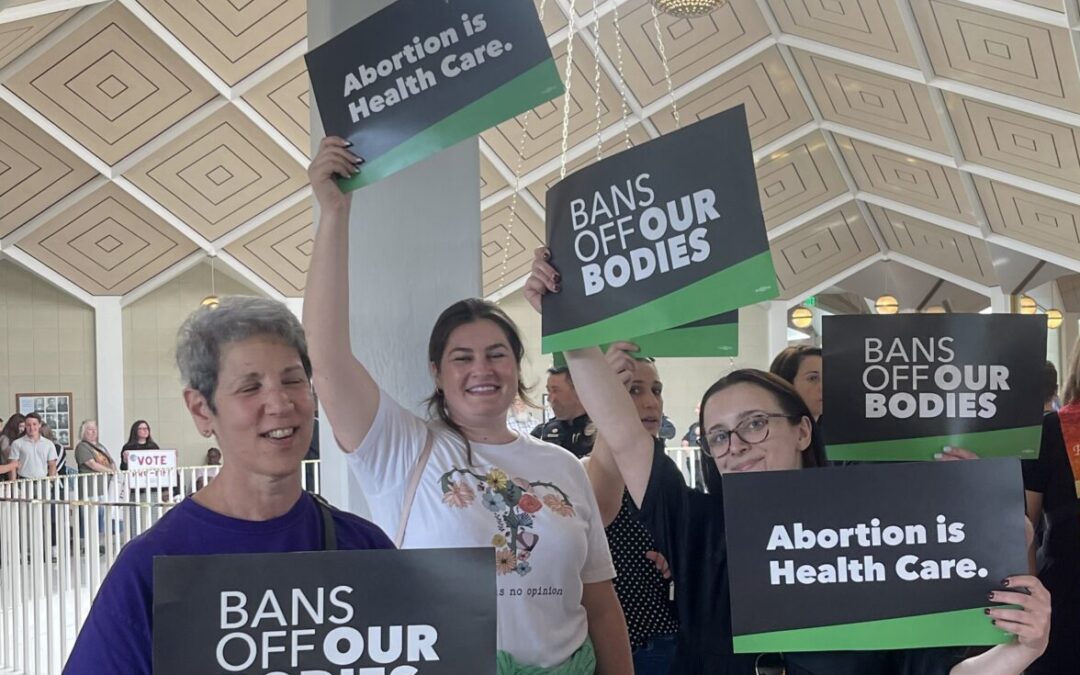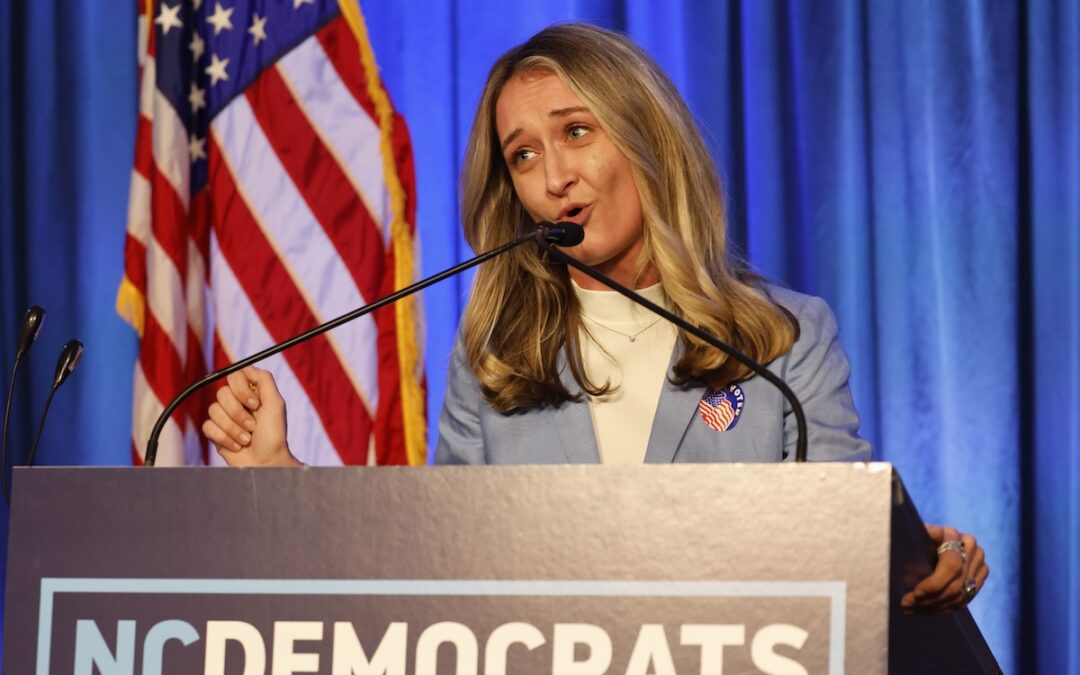
Graphic via Denzel Boyd for COURIER
Without a comprehensive plan that includes additional federal funding, teachers and parents argue, reopening schools could put students, their families, and educators in danger.
When Sarah Thompson thinks about her son’s schooling this fall, she feels like her head is going to explode.
The 29-year-old North Carolina mother has spent the past four months working from home full time and helping her eight-year-old complete his new online learning curriculum. The experience, she said, was overwhelming.
“It’s been a huge challenge. I don’t know what else to say about it. It constantly feels like trying to put a square peg into a round hole,” said Thompson, who works at the local Ronald McDonald House. “[There’s] not enough time for anything and school was really hard.”
When the pandemic hit and schools were closed, Thompson felt like distance learning would be difficult, but manageable. Her son’s school district, in Winston-Salem, North Carolina, offered parents a lot of support, and even provided Chromebooks and portable WiFi hotspots to students who needed them.
“We had all the right resources to succeed … I didn’t lose my job so we’re financially stable and I’m not worried about that, and I only have one kid,” Thompson said. “I felt like we should have been able to succeed, but it was still so impossible.”
It was a battle to get her son to do his work, and neither of them enjoyed the experience. “It was really, really frustrating,” she said. “We did it and we got everything done and he fulfilled all his requirements, but it was really hard and it wore on both of us.”
Now, she’s faced with the possibility of having to go through that experience again when school resumes this fall. Given the rampant spread of COVID-19 in North Carolina—the state documented a single-day record of new cases on Saturday with 2,462—Thompson is wary of allowing him to return to school in the absence of comprehensive safety measures that would protect her son from contracting COVID-19.
“I want him to go back to school, I want him to be in a classroom with friends, I want him to have classroom instruction, but I just don’t know if it’s safe,” she said. “I just have internal screaming. I don’t know what’s the safe thing to do.” (Full disclosure: Thompson attended the same high school as the reporter for this story.)

Thompson’s dilemma is one facing tens of millions of parents across the country who have found themselves in the impossible situation of working from home, parenting their children, and trying to maintain their own physical and mental health during a once-in-a-century global pandemic.
“I’ve been calling myself a full-time working stay-at-home mom,” said Allison Belyea, a Texas mother of four young children. “I still have 40 hours of work to do and employees and I’ve got four kids running around being crazy in the background now.”
Belyea, like Thompson, was fortunate enough to be able to transition into working from home, as was her husband. She was also able to lean on her parents, who live nearby, for help with her children. But even with help, wrangling an eight-year-old, a five-year-old, and twin three-year-olds while juggling a full-time job still proved incredibly challenging and became a battle of attrition.
“I’m just trying to keep them busy and keep them out of danger,” Belyea said.
Belyea, who lives north of Houston in Harris County, is also skeptical about sending her kids back to school, especially as her region suffers one of the nation’s fastest-growing and most severe outbreaks of COVID-19.
Thompson and Belyea’s concerns are shared by a majority of Americans. According to a recent Politico/Morning Consult poll, a combined 54% of American voters said they were very or somewhat uncomfortable with the idea of reopening K-12 schools this fall.

The Battle Over Reopening Schools
Over the past several weeks, the debate over whether schools can safely reopen has grown contentious. President Donald Trump and many Republican allies, including Education Secretary Betsy DeVos, are aggressively pushing to reopen schools. Doing so is widely seen as critical to any economic recovery, and for Trump, a path to re-election must include getting more Americans back to work.
Lily Eskelsen García, president of the National Education Association (NEA), the largest teacher’s union in the U.S., knows this too. “Trump is concerned more with election dynamics than the lives of students and their educators, and the White House’s pressure campaign presents a false choice between the health of our students and the health of our economy,” she told COURIER in a statement.
RELATED: Trump Pressures Governors to Fully Reopen Schools Even as Coronavirus Surges—Or Else
Meanwhile, teachers and health officials have sounded the alarm about the lack of clear, comprehensive, and consistent federal guidance needed to send children back to school safely—and more importantly, the tens of billions of dollars such efforts would cost.
“We want to reopen the schools,” Trump said last week. The president said he would pressure governors to reopen schools and accused opponents of his effort of trying to play political games. “We don’t want people to make political statements or do it for political reasons. They think it’s going to be good for them politically, so they keep schools closed. No way.”

“No one wants to welcome students back to classrooms more than America’s educators,” Eskelsen García said. “We know firsthand that nothing can replace the magic of a student’s curiosity when they are able to learn alongside their peers from a teacher who has dedicated her life to the success of other people’s children. But the Trump administration has provided no real plan, their actions are chaotic, and their rhetoric is appallingly reckless.”
As the number of COVID-19 cases surge in most states, rank-and-file teachers—more than 25% of whom are over the age of 50—and support staff are also increasingly alarmed about returning to the classroom without proper precautions. Some have even said they will not return to work until the transmission rate in their counties falls dramatically.
The Centers for Disease Control and Prevention issued a 62-page guidance in May recommending a series of social distancing policies for schools, including: keeping desks at least six feet apart; having students eat lunch in classrooms; staggering arrival times; requiring face masks for staff and daily temperature screenings for everyone; regular disinfection of communal spaces; and promoting social distancing measures on school buses.
“No one wants to welcome students back to classrooms more than America’s educators.”
But Trump blasted the CDC last week over its guidelines, calling them “impractical” and “very tough and expensive,” prompting the agency to say it would issue additional guidance on school openings. CDC Director Dr. Robert Redfield noted that COVID-19 cases tend to be mild in children and encouraged schools to reopen with customized plans to mitigate the spread of COVID-19 while allowing students to return to in-classroom learning.
“It’s clear that the greater risk to our society is to have these schools close,” Redfield said. “Nothing would cause me greater sadness than to see any school district or school use our guidance as a reason not to reopen.”
While children are less likely to fall seriously ill or die, more than 11,000 children have tested positive for COVID-19 in Florida alone, and a small, but growing number of kids are now dying from the virus.
The Case for Reopening Schools
Experts acknowledge that reopening schools will mean more cases of COVID-19 and potentially even large outbreaks, but argue that the short- and long-term consequences of keeping them closed would also be devastating.
One of the most critical risks is the emotional well-being of America’s children. The mental health impact of keeping children at home has already been staggering, research shows. According to a recent Gallup survey, three in 10 (29%) parents say their child is “already experiencing harm” to their emotional or mental health because of social distancing and school closures. Another 14% indicate their children are reaching their limits and are on the verge of suffering mental health issues.
Thompson sees these issues bubbling up in her son. “The longer this goes on, I worry more and more about his mental and social and emotional health,” she said. “You see your kid suffering and struggling because they don’t have interaction with friends.”
The problems go far beyond just mental health. “Students who are out of school are more likely to be sedentary and experience weight gain,” Joseph Allen, an assistant professor of exposure assessment science at Harvard University’s T.H. Chan School of Public Health, wrote in a recent Washington Post op-ed. “Many also lose access to hot meals; millions of children rely on federal programs for free or reduced-price meals.”
The American Academy of Pediatrics, which supports reopening schools “in a way that is safe for all students, teachers and staff,” also highlighted other potential consequences of keeping schools closed this fall.
“Lengthy time away from school and associated interruption of supportive services often results in social isolation, making it difficult for schools to identify and address important learning deficits as well as child and adolescent physical or sexual abuse, substance use, depression, and suicidal ideation,” the group said in a statement. “This, in turn, places children and adolescents at considerable risk of morbidity and, in some cases, mortality.”
The educational consequences can also be devastating. At least 10,000 public school students in Boston—nearly 20% of the public school student population—didn’t log into their online learning systems during the month of May, putting them on track to be virtual dropouts. In the first 10 weeks of distance learning in Philadelphia, only 53% of the city’s elementary school students made daily contact with their teachers.
Even the students who participate stand to suffer. One study from Brown University, the University of Virginia, and the NWEA found that based on research of past closures, students likely made only about two-thirds of their typical educational gains in reading and less than half of their usual improvements in math during the most recent school year.

The prolonged shutdown of schools also threatens to exacerbate the achievement gap by as much as 15-20%, according to an analysis from McKinsey & Company. The analysis found that while the average student could fall seven months behind academically, Black students lose the equivalent of 10 months of learning while Latino students lose nine months. These impacts could follow students for decades, affecting their future income and career prospects..
The short-term economic cost of keeping schools closed is also immense. One recent estimate suggested that shutting down every school in the U.S. costs the economy $51 billion a month.
The damage has been especially brutal for American parents, 13% of whom have had to quit a job or reduce their hours due to a lack of childcare during the pandemic, according to a survey of 2,557 working parents conducted by Northeastern University from May 10 to June 22. That burden has also disproportionately fallen on women, who have been more likely than men to lose their jobs during the pandemic, hurting their future career and economic prospects.
The damage could get even worse the longer schools stay closed. About 17.5 million workers— 11% of the American workforce—take care of young kids on their own and would be unlikely to return to work full time until schools and daycares fully reopen, according to an analysis by the University of Chicago’s Becker Friedman Institute.
One Size Won’t Fit All
Much like its overall response to the COVID-19 pandemic, the Trump administration has decided not to spearhead a coordinated reopening strategy. Instead, the federal government is leaving the decision of whether schools can reopen up to each of the approximately 13,500 school districts across the country, while simultaneously threatening them to fall in line.
Virginia’s Fairfax County Public Schools devised a plan to allow families to decide between fully online instruction or sending their children to school for two days a week, an effort that was denounced by Education Secretary DeVos.
“A choice of two days per week in the classroom is not a choice at all,” DeVos said during a call with governors last week.
RELATED: DeVos Slammed After Doubling Down on Reopening Schools
DeVos has said that bringing students back only part-time was unacceptable. “It’s clear that our nation’s schools must fully reopen and fully operate this school year. Anything short of that robs students, not to mention taxpayers, of their future,” she said.

That, of course, is increasingly unlikely to happen. The CDC and the nation’s top infectious disease official, Dr. Anthony Fauci, have said that some school districts are likely to reopen, while others do not, based on how prevalent COVID-19 is in the community.
“It’s not going to be one-size-fits-all,” Fauci said last week.
This patchwork system means that some students are likely to return to school full-time, while others take part in a hybrid-model of in-person learning and online learning, while others participate in entirely online curriculums.
In Arizona, amid a spiraling outbreak, Gov. Doug Ducey has barred schools from reopening for in-person classes until mid-August. The Los Angeles Unified School District announced Monday it would not reopen its schools on Aug 18, meaning students in the nation’s second-largest school system will continue online learning until further notice. The San Diego Unified School District was planning to reopen all schools for all students who want to come five days a week, but reversed course on Monday, joining the LA USD in announcing an online-only curriculum.
RELATED: Arizona Parents, Teachers Stress Need to Open Schools Safely, Not Quickly
The state of Florida, meanwhile, announced last week that it will require schools to reopen for in-person classes next month. Days later, it obliterated the single-day record for new cases in any state since the pandemic began, with 15,299 confirmed cases on Sunday.
Teachers expressed outrage over Florida Gov. Ron DeSantis’ decision and said that schools should only reopen with a plan and with adequate funding. The NEA and five other groups representing parents and educators also issued a statement last week reiterating the need for a comprehensive plan and funding.
“Without a comprehensive plan that includes federal resources to provide for the safety of our students and educators with funding for Personal Protective Equipment, socially distanced instruction, and addressing racial inequity, we could be putting students, their families, and educators in danger,” the groups said.
Mo’ Money, Less Problems
The cost of proper protective measures would undoubtedly be expensive. The American Federation of Teachers, the nation’s second largest teachers union, has estimated that safely and effectively reopening schools would cost an additional $116 billion. Another group estimated the price tag could be as much as $244.6 billion.
The exact cost is hard to quantify, but the Association of School Business Officials International and AASA/School Superintendents Association conducted an analysis and found that the average school district would need $1.8 million to reopen safely.
Congress has thus far appropriated only $13.5 billion to K-12 schools and $3.5 billion for child-care help, and with state and local budgets decimated by the economic impact of the coronavirus, the federal government is the only possible source of the kind of funding that education officials say they need.
RELATED: Here’s What Will Happen If the Trump Administration Doesn’t Provide Aid to States
House Democrats passed a bill in May providing $58 billion in new funding for schools, but Republicans have been slow to address the looming crisis. Senate Majority Leader Mitch McConnell said he is open to one more coronavirus relief bill to cover some of the costs of reopening schools, but did not provide specifics. “We can’t get back to normal if the kids are not back in school,” he said last week.
Parents like Thompson, the North Carolina mom, are frustrated that funding for school reopenings hasn’t been more of a priority. “To take these precautions is expensive and it requires resources,” she said. “I think we all see too that all of this is going to require training, and that’s teacher time and staff time and somebody’s going to have to train them. Everything costs money.”
Are These Precautions Realistic?
Even if Congress does fund these health measures, there is concern about their efficacy.
“I teach four- and five-year-olds, so I think that it’s pretty unrealistic to expect kids that age to keep a mask on and stay apart from each other,” said Madelyn Ross, a 29-year-old elementary school teacher in Santa Monica, California. She did note, however, that such measures would be easier to implement for middle schoolers and high school students.
But Thompson said her son, who is a neurotypical eight-year-old, can barely make it through a stop at the grocery store without wanting to take his face mask off. “He wants to touch it, he wants to take it off, it’s uncomfortable, it’s itchy,” she said. “There’s no way he can wear a mask for part or all of the day.”
Ross also said she is skeptical of in-person teaching because so much of her students’ day-to-day revolves around making friends, learning to play in the schoolyard, and sitting next to other students, and she’s not sure how to replicate that with social distancing and other safety measures.

“In my classroom, we only have shared tables and shared supplies and we spend a lot of time on the rug and all of those pieces would be taken away,” she said. She also worries that she’d have to spend so much time regulating mask-wearing and monitoring where students were that it would make it really difficult to do her job.
RELATED: I’m a Microbiologist and a Mom. This Is Why I’m Keeping My Kids Home This Fall.
Allen, the Harvard professor, acknowledged to reporters during a recent press call that compliance with safety measures would be difficult, but said school districts could have an impact on how students and staff behave.
“Schools need to establish and reinforce a culture of health, safety, and shared responsibility. This is really the only way we’re going to get through this,” he said. “We have to move from the place where mask-wearing and hand-washing is an exception to where it’s the norm and it’s expected. It requires a great deal of social trust, so we have to establish and reinforce this culture of health safety and shared responsibility.”
Even so, Ross said she’s not certain anything will make her fully comfortable with returning to the classroom, even though she’s 29 and in “good health.” She also expressed concern about her colleagues who had pre-existing health conditions or spouses with illnesses, or who served as caretakers for elderly family members.

“I think that no matter the supplies or money given, unless it’s curing the coronavirus, it’s not going to really change their outlook or their safety,” Ross said.
The Clock Is Ticking
Schools in many states are set to resume classes in about a month, meaning districts have little time to finalize their plans, and the federal government has even less time to take action. Senators are expected to return to Capitol Hill on July 20, giving them roughly three weeks before their next scheduled recess to pass another coronavirus relief bill to provide funding for schools.
In some cases, parents are already being forced to decide. Belyea got word from her local school district on Friday that she and her husband had two weeks to decide whether they want their sons to study online or return to in-person learning at their physical schools.
“I think we are going to have them do online first and re-evaluate in October,” Belyea said. “It hurts my heart that this will be my younger son’s introduction to kindergarten, but Houston is too much of a hotspot to take the risk.”
Thompson, meanwhile, is awaiting an announcement from North Carolina Gov. Roy Cooper this week on whether schools will be allowed to reopen.
She isn’t sure what she’ll do, even if in-person learning is authorized. She’s wary of putting her son, herself, her family, and her co-workers at risk.
“I don’t feel good about sending him back, but I don’t feel good about keeping home,” Thompson said. “I just don’t know what the solution is. I don’t know what is going to be safe.”
Politics

Op-Ed: North Carolina Republicans are working overtime to restrict abortion even more. But we can stop them at the ballot box.
When I think about abortion access in North Carolina, I think about lying there on a hospital bed after I was sexually assaulted, with sympathetic...

Mark Robinson and Michele Morrow pose a threat to women and kids, warns Anderson Clayton
The state’s Democratic Party chair believes North Carolinians deserve better than a six-week abortion ban and the defunding of public schools that...
Local News

The 5 most believable UFO sightings ever reported in North Carolina
Read about five alien encounters that may forever remain unexplained. When you think of the most common places where you might hear a UFO sighting...

Good News Friday: It’s a good day to be a fan of the NC State Wolfpack
The men's and women's teams will compete for a national championship in college basketball this weekend. Plus: How to watch the solar eclipse, and...




